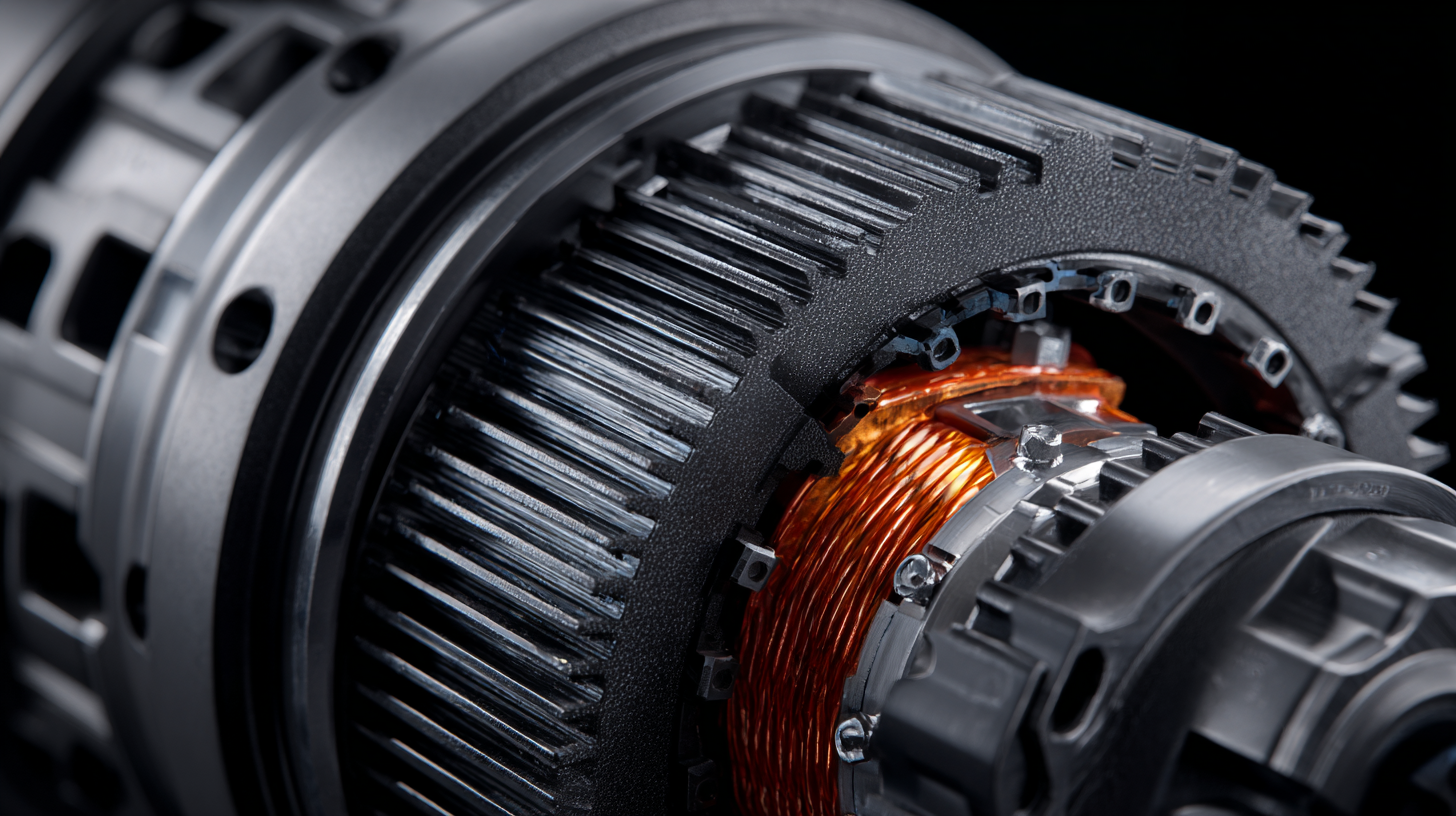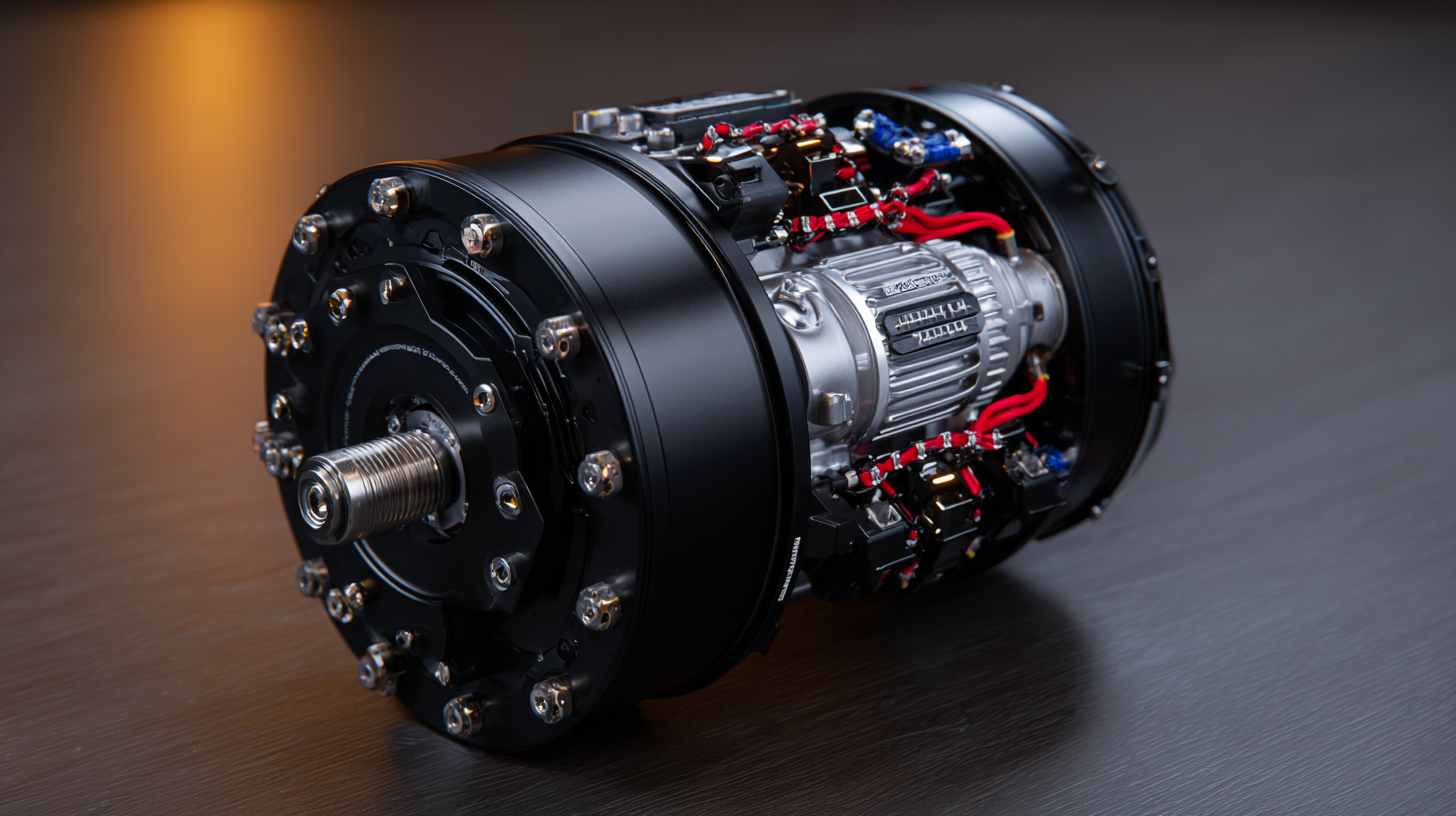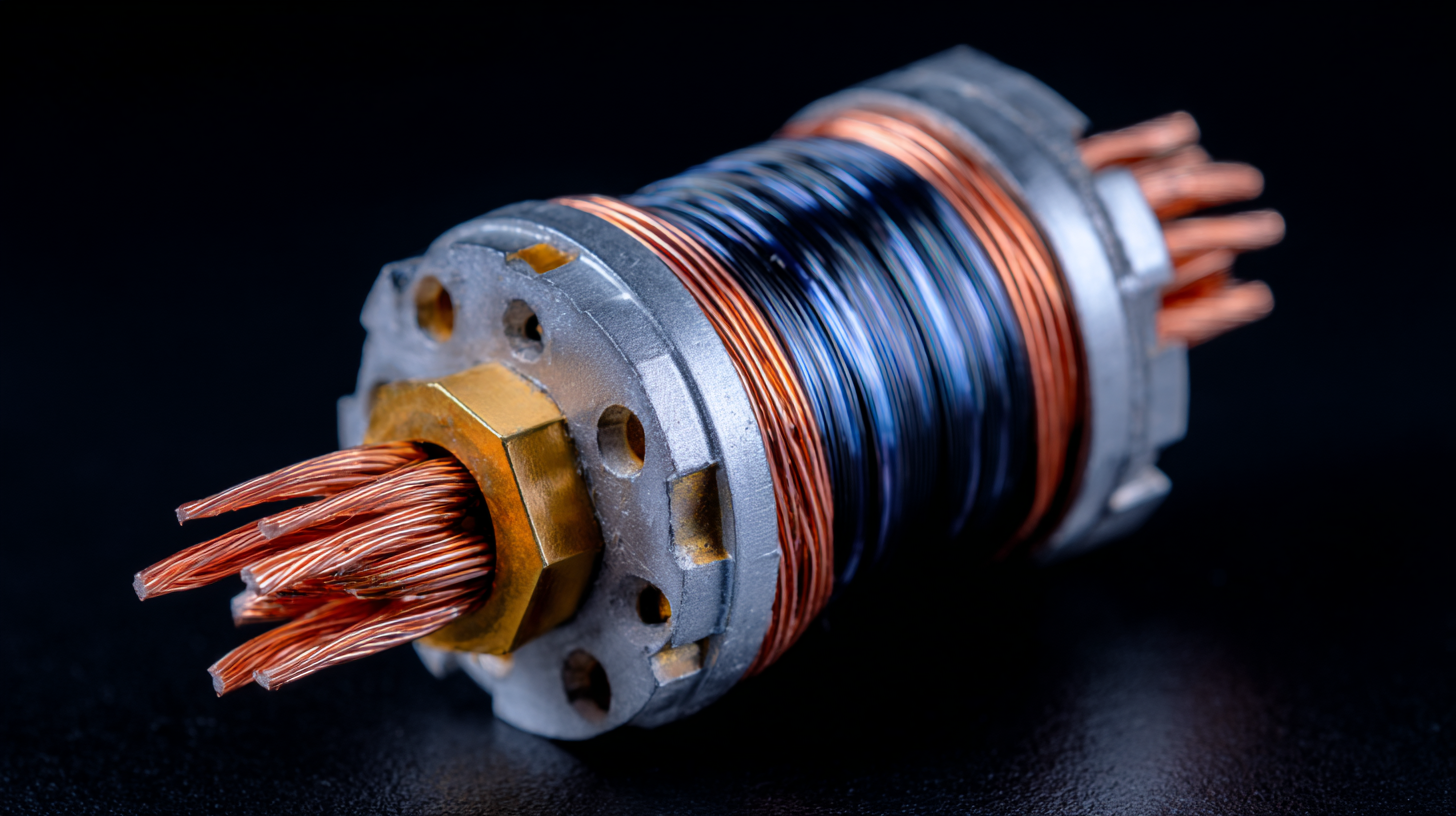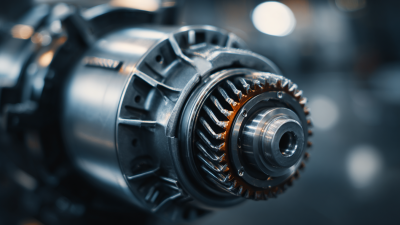The rise of Brushless Motors has marked a transformative shift in energy solutions across various industries, presenting significant advancements in efficiency and performance. According to a report by MarketsandMarkets, the global brushless motor market is projected to reach $14.85 billion by 2025, growing at a CAGR of 9.5% from 2020. This growth is driven by increasing demand for high-efficiency motors that contribute to energy conservation and reduce greenhouse gas emissions. Brushless Motors, with their superior reliability and reduced maintenance requirements, are increasingly being integrated into applications ranging from electric vehicles to industrial automation. As technology continues to evolve, the implementation of Brushless Motors stands to redefine the future landscape of energy solutions, enhancing operational efficiency and enabling sustainable advancements in various sectors.

Brushless motors represent a significant advancement over traditional brushed motors, primarily through their design and operational efficiency. Unlike brushed motors, which use mechanical brushes to transfer electricity to the rotor, brushless motors employ electronic controllers to manage the supply of current. This fundamental difference eliminates the friction and wear associated with brushes, resulting in reduced maintenance needs and a longer lifespan for the motor.
Moreover, brushless motors provide superior efficiency and performance. They achieve higher power-to-weight ratios, which allows for more compact designs without sacrificing output. The absence of brushes also enables smoother operation and quieter performance, making them ideal for applications demanding precision and low noise levels, such as drones and electric vehicles. As industries increasingly seek sustainable energy solutions, the adaptability and performance benefits of brushless motors will play a pivotal role in the development of future technologies, fostering innovations across various sectors.
 Brushless motors are revolutionizing the energy landscape, providing a significant efficiency advantage over traditional motor technologies. By eliminating the friction and wear associated with brushes, these motors offer higher performance and lower maintenance costs. Moreover, their ability to operate at different speeds without loss of efficiency makes them ideal for a variety of applications, from electric vehicles to consumer electronics. This efficiency translates to energy savings that not only reduce operational costs but also contribute to a more sustainable future.
Brushless motors are revolutionizing the energy landscape, providing a significant efficiency advantage over traditional motor technologies. By eliminating the friction and wear associated with brushes, these motors offer higher performance and lower maintenance costs. Moreover, their ability to operate at different speeds without loss of efficiency makes them ideal for a variety of applications, from electric vehicles to consumer electronics. This efficiency translates to energy savings that not only reduce operational costs but also contribute to a more sustainable future.
Tips for Maximizing Efficiency with Brushless Motors:
1. Choose the Right Controller: Selecting a high-quality electronic speed controller can enhance the motor's efficiency by optimizing power usage based on load demands.
2. Regular Maintenance Checks: While brushless motors are low-maintenance, periodic inspection can identify potential issues early, ensuring longevity and consistent performance.
3. Consider Design Integration: When designing new applications, integrating brushless motors at the outset can unlock their full potential, leading to an even greater overall energy saving.
Incorporating brushless technology into energy solutions not only boosts the efficiency of existing systems but also sets the stage for innovation in future technologies. As industries move towards more responsible energy consumption, the adoption of brushless motors will play an essential role in shaping a greener and more efficient world.
Brushless motors are emerging as transformative components across various modern industries, thanks to their efficiency and versatility. Their applications span from consumer electronics to automotive, robotics, and industrial automation, underscoring their pivotal role in enhancing operational efficiency. In consumer electronics, for example, brushless motors enable quieter operation and longer lifespan, making them ideal for devices like fans and computer cooling systems. The automotive industry benefits as well, as electric vehicles leverage brushless motors for propulsion, leading to reduced emissions and improved vehicle performance.
Moreover, with the rise of Industry 4.0, brushless motors are integral in driving automation and smart manufacturing processes. Their precision and reliability ensure higher productivity and reduced downtime in production lines. Industries are increasingly realizing the importance of adopting advanced motor technologies, such as those developed with digital tools, which further refine product quality and lifecycle management. As sectors continue to innovate, the demand for brushless motors is poised to grow, solidifying their impact on future technologies and energy-efficient solutions.
| Application Area | Energy Efficiency (%) | Power Range (kW) | Key Advantages | Future Trends |
|---|---|---|---|---|
| Electric Vehicles | 90-95% | 10-200 | High torque density, low maintenance | Integration with smart grids |
| Aerospace | 85-90% | 5-100 | Lightweight, high reliability | Hybrid electric propulsion systems |
| Robotics | 80-92% | 1-50 | Precise control, compact size | Increased autonomy and AI integration |
| Home Appliances | 75-90% | 0.1-5 | Quieter operation, durability | Smart home integration |
| Industrial Automation | 85-95% | 5-1000 | High efficiency, low heat generation | Increased use in IoT applications |
The advancements in brushless motor technology are set to play a pivotal role in shaping the future of numerous industries. With their efficiency and reliability, these motors are facilitating innovations in robotics, electric vehicles, and renewable energy systems. Their ability to deliver high performance with lower energy consumption not only enhances operational efficiency but also supports sustainability efforts, making them integral to modern technology landscapes.
**Tips for Adopting Brushless Motors**: When considering brushless motors for your projects, evaluate the torque and speed requirements to determine the suitable motor size. Additionally, implementing proper thermal management can significantly enhance performance and longevity, ensuring that your system operates at optimal efficiency.
Moreover, as smart technologies continue to evolve, the integration of brushless motors in IoT devices is becoming increasingly prevalent. These motors not only improve device responsiveness but also contribute to energy conservation—a critical aspect as we strive toward greener solutions. Optimizing motor control algorithms can further refine precision and enhance the capabilities of applications ranging from home appliances to advanced industrial machines.

When selecting the right brushless motor for your projects, it's essential to consider several key factors. First, assess the specific requirements of your application, such as torque, speed, and power consumption. Brushless motors come in various configurations, including outrunner and inrunner designs, each offering unique advantages depending on the project's needs. Understanding the operational environment, such as temperature range and space constraints, will also guide your choice in selecting a motor that will perform optimally without overheating or underperforming.
Another critical aspect is the compatibility of the brushless motor with your control system. Ensure that the motor's voltage and current ratings align with your power supply and electronic speed controller (ESC). Additionally, look for features such as integrated sensors for better feedback and control. Evaluating the motor's efficiency ratings can also help you identify models that offer an optimal balance between performance and energy consumption, making your project not only effective but also eco-friendly. By keeping these tips in mind, you can unlock the full potential of brushless motors to enhance your projects and contribute to future advancements in technology.






